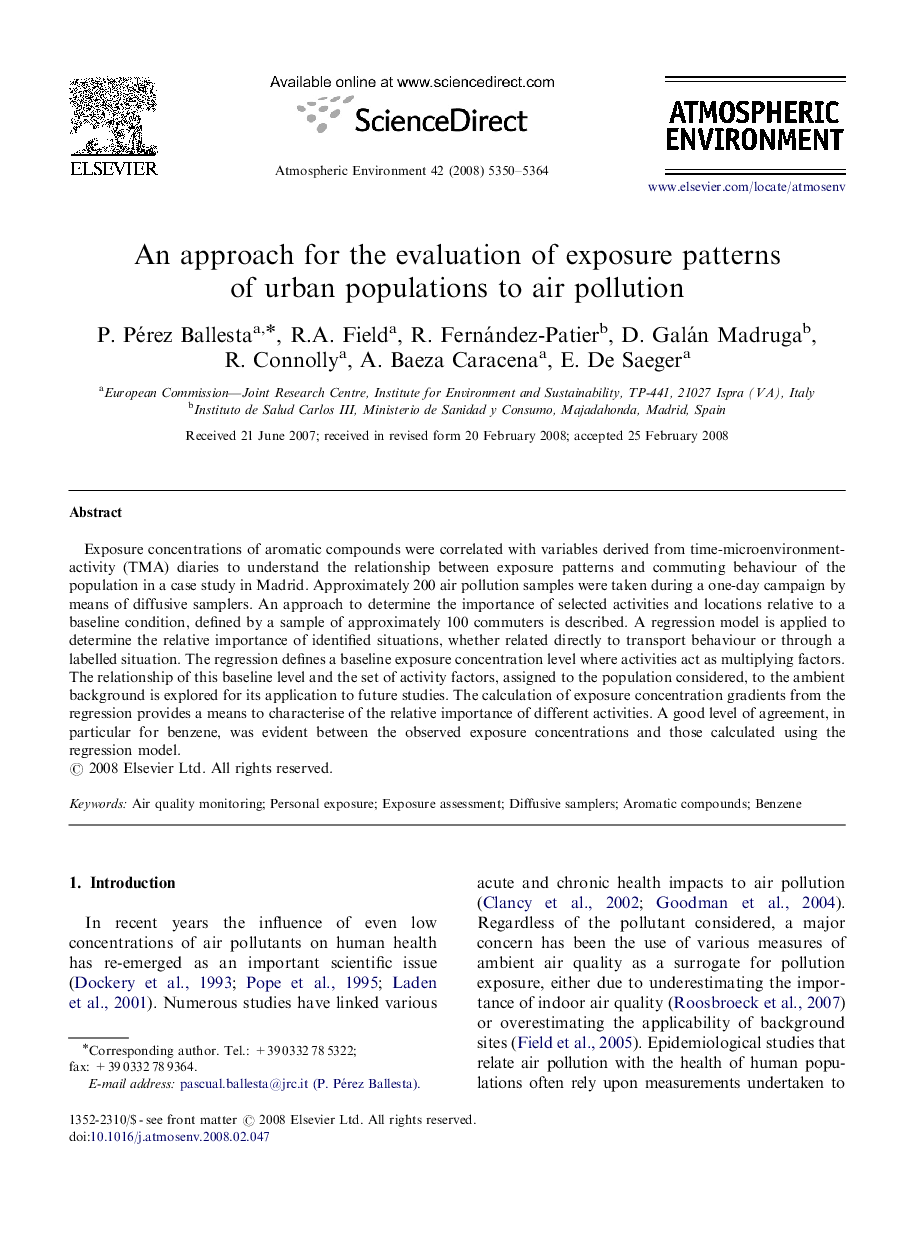| Article ID | Journal | Published Year | Pages | File Type |
|---|---|---|---|---|
| 4442738 | Atmospheric Environment | 2008 | 15 Pages |
Exposure concentrations of aromatic compounds were correlated with variables derived from time-microenvironment-activity (TMA) diaries to understand the relationship between exposure patterns and commuting behaviour of the population in a case study in Madrid. Approximately 200 air pollution samples were taken during a one-day campaign by means of diffusive samplers. An approach to determine the importance of selected activities and locations relative to a baseline condition, defined by a sample of approximately 100 commuters is described. A regression model is applied to determine the relative importance of identified situations, whether related directly to transport behaviour or through a labelled situation. The regression defines a baseline exposure concentration level where activities act as multiplying factors. The relationship of this baseline level and the set of activity factors, assigned to the population considered, to the ambient background is explored for its application to future studies. The calculation of exposure concentration gradients from the regression provides a means to characterise of the relative importance of different activities. A good level of agreement, in particular for benzene, was evident between the observed exposure concentrations and those calculated using the regression model.
